When flying back from holiday the other day I was glancing at the on-board bar prices. (Despite living a multi-millionaire playboy lifestyle, I am too mean to pay for a flight that has a free bar.)
They were selling 5cl miniatures of Bombay Sapphire gin (standard 40% strength) for £4 a bottle. By my maths, that works out at £80 a litre. The same flight was selling duty free (which unfortunately you are not meant to consume on the flight) Bombay Sapphire (at 47% strength: the good stuff) for £24 for two one litre bottles: £12 a litre. That, by any standards, is a significant price differential.
In the field of legal costs there is a similar level of surprising price gap between the hourly rates that claimant representatives claim and the rates charged by defendant lawyers. Claimants argue that this difference is not evidence that they are overpaid – and therefore that the Guideline Hourly Rates are too high – but rather is due to a combination of the fact that defendant lawyers have guaranteed work volumes and that claimant lawyers have different acquisition costs due to advertising and/or referral fees.
I will leave others to decide whether this explains the following example. This is simply one in my current case load and is far from being anything like the most extreme example I have seen.
The case concerns a high profile, high damages sporting injury claim. The main fee earner (a Grade A) for the claimant is based in a Northern city (Band One). The rate claimed for 2007 is £285. A 100% success fee is claimed in addition. With VAT at 15%, the total claimed is £655.50 per hour. The main fee earner (also Grade A) for the defendant is based in Central London. The rate charged to the defendant insurers for 2007 was £160 (£184 with VAT). Both fee earners are specialists in this type of claim. So, a rate of £655.50 as against £184.
It is no doubt fair to say that comparing a CFA funded case with a non-CFA funded case is something of an artificial comparison. Nevertheless, the base hourly rate claimed by the claimant’s solicitor is 46% above the Guideline Hourly Rates for the area where the firm is based. The rate charged by the defendant solicitor is 45% below the Guideline Hourly Rates for the area where the defendant firm is based. Despite the claimant’s solicitors being based in an area where the Guideline Hourly Rates are lower, they are claiming a rate that is 78% higher than the defendant’s.
Of course, maybe claimant lawyers are just “worth” more.
Feel free to submit more extreme examples than this one.


7 thoughts on “Make my hourly rate a double”
I always remember when this first started raising its ugly head, in Finlay-v-Galaxo, and the “average rate” for all solicitors rates information studies was mooted
Mistrust by defendants Soliciotrs, keen to protect details of their rates agreements with their Insurers clients, really scuppered any realistic assessment, which in turn led to the first rates guidelines
Failures over successive rates studies (for the same reasons, which i witnessed first hand on many Court User Group Meetings to duscuss exactly these issues) to give proper information by Defendants for fear of revealing the panel arrangements, killed off any chance of arresting the rates increases
How ironic, therefore, defendants now suddenly want to complain at the imbalance, which they have actively contributed to by their “cloak and dagger” approach over many years!!
What a shame, they also missed the biggest increase of all, when CPR came in and we switched from the old “A rate + B enhancement”, to distinguish from the new “uplift” on CFA’s. Look back, see the pre-CPR rates, see how they were very low on “A rate”, then suddenly we had the change to “composite” rates, which compromised the “B rate” inclusive, but significantly raised the base rate throughout.
Final point. Most defendant solicitors run fixed fee schemes with insurers, whilst of CCFA’s, which allow them to charge “guideline rates” in the event the other side have to pay costs. So they are happy to adopt the same rates then! But as one set of firms let known, the fixed fee arrangements otherwise equate to £90.00 per hour (for 5 hours work) – hypocracy is a wonderful thing in the right hands!!
Some interesting points there. Does anyone have copies of the pre-CPR rates; I have been trying to track these down?
I have a set of rates for December 1998: it describes itself as “inclusive of mark up” which I believe refers to the B rate. I think the New Law Journal used to publish the guideline rates: a search through pre-CPR back issues might bear fruit.
I have some various documents outlining rate guidelines for most of the courts going back to the mid-80’s
the trick is to get into my basement and find them!
I’ll keep you posted
Anything vaguely official showing the pre-1999 rates would be great. I can see about getting these added to the Law Costs Central pages.
Pingback: Guideline Hourly Rates confirmed : GWS Law
Is anyone interested in a case in which the solicitor provided THREE estimates of costs over the space of almost a year ALL based on £80/hr – but on detailed assessment claimed £165/hr? … claiming as much as 530% MORE in the bill? Ah, and the so-called estimates were almost exclusively for costs already incurred.
We go to the CofA on 15th October to see if it really IS ok for a solicitor to more than DOUBLE the charging rate 2 years AFTER the work was done.